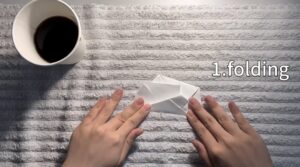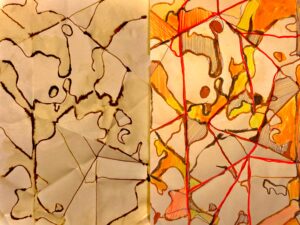Soft states: Unfolding emotions and liquid feelings

Summary
This toolkit is a contemporary art practice based on emotional power, not art therapy. It explores "emotion as a material" and guides learners to enter a process-centered artistic way, inspired by soft, fluid and physical attention. You don't need artistic skills or artistic background to complete this toolkit. It is an experiential method.
( Note: this is not a tool for diagnosis or treatment!)
What’s your emotion now?
We always divide life into stages, separate the length of life through one thing after another, and summarize emotions.
When we break up and lose our loved one, we will summarize this difficult time as a sad emotion.
However, the emotion is so soft that it is changeable every time.
Comfort from friends may bring happiness; There may be a brief anger when coffee is spilled; And listening to favorite music may also bring you peace.
In fact, people’s emotions are very soft, and people will experience many emotional changes in one day, either sadness, happiness, anger or calm.
Now we don’t talk about “how are you feeling these days” or “how are you feeling today” .
But “whether you felt your emotions in these 20 minutes”.
Observing emotions as a material, you will begin to find things that you can’t see at ordinary times, such as:
where is the tension hidden in your body?
How do emotions flow?
What borders protect you?
What soft moments surprised you?
Let these problems appear in the process of folding, flowing, recording.
( Note: What you want to “discover” is not a problem, a wound or a conclusion, but how you operate, how emotions are expressed as a force, and how you are seen, named and understood in relationships. Such a discovery requires no pressure, no performance, and no precise language. It gives you a softer and freer way to know yourself. What you find is not an “answer”, but a new way of watching!)
Soft States —— “Soft” does not mean gentle, fragility, tame or “good mood”.
It is a comprehensive concept of emotional state + material state + relationship state.
From the emotional level
softness = emotional deformability.
Emotions are not rigid or closed, but can bend, spread, be triggered and be seen.
From the material level
softness = material expression of emotion.
Folding = emotional contraction and defense.
Soaking = the flow and invasion of emotions. Wrinkle = texture left by pressure. Expand = Expose, show, out of control.
From the relational level
softness = the ability to form meaning together with others.
It is a way to allow others to witness you, not to talk about your emotions.
HERE WE GO!!!
Preparation materials
They are low price, simple, easy access, single use.
( Note: Be careful to stain the color on your clothes and environment, and pay attention to protection!)
1: A piece of foldable paper (napkin/tissue/fabric)
2: Water or other liquid
3. Color (ink/watercolor/liquid cosmetics/juice)
Now, take a deep breath and ask,
How soft am I today?
Step 1: Folding (2 minutes)

Fold the paper one or more times.
You can fold it in a straight line and turn it into a polygon.
Of course, you can also fold it according to an arc, or even fold it into a circle.
Thinking: What am I protecting or wrapping?
Step 2: Flowing (2 minutes)

Drop water+one color on the folded paper. Let the liquid move by itself.
Manipulate your piece of foldable paper (Napkin/Tissue/Fabric) to make colored liquid flow.
You can leave some parts stained with color for a long time.
Or you can open your material layer by layer and let it flow according to your mood.
Thinking: Where does the liquid want to flow? What is your resistance?
Step 3: Recording (6 minutes)

Expand your work and record it with the colored tools you have.
You can sketch along your crease or along the edge of flowing color traces.
You can only use lines for recording, or you can paint colored blocks on the basis of existing traces for recording.
You can record with similar colors or choose colors with strong contrast.
(Note: that the recording material here can be any material that can leave traces. Whether it’s colored pens made of various materials, pencils, cosmetics, fruit juice, or colored objects for rubbing!)
Or you can just remain the same.
(Note: “inaction” is also a way of recording!)
Thinking: What did I not expect?
Step 4: Archive (Optional)

Choose 1: Find a part of your work that is most inspiring, circle it or underline
or go on recording it for marking.
Choose 2: Write 3-5 related words according to your work.
Choose 3: Remain the same.
(Note: “inaction” is also a way of archiving!)
IT IS OVER!!!
Hope that through this activity, you can understand “emotions as materials”, experience contemporary art, practice nonverbal attention, develop patience, observation and sensitivity, and create a “soft states” instead of an evaluated art work.
We explore emotion as soft material through
FOLDING, SOAKING, UNFOLDING
There is no right outcome
The value is noticing
Boundaries are respected
Process is the artwork
( Soft states: Unfolding emotions and liquid feelings © 2025 by Luosijie Ding is licensed under CC BY-SA 4.0. To view a copy of this license, visit https://creativecommons.org/licenses/by-sa/4.0/ )


